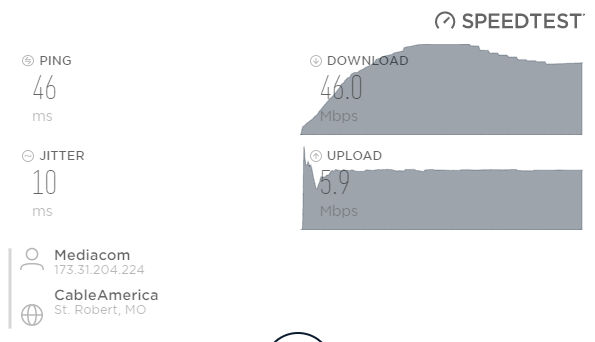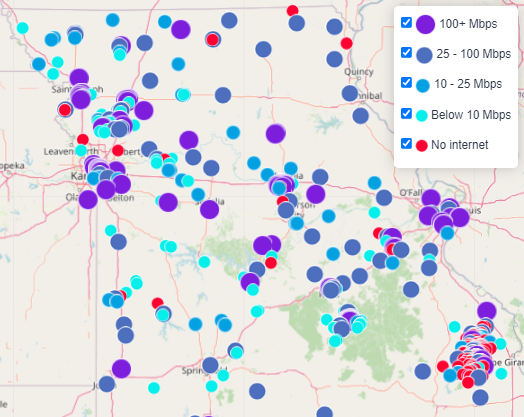Looking for the Broadband Survey? Click HERE
The Guide uses a five-step plan, informed by an online workshop, to bring high-speed internet to unserved Missouri communities. The five-step plan aims to:
Module 0 – Introduction
Does the prospect of dealing with something as complicated as the internet overwhelm you? Are you mystified by how the internet works? Why not take a few minutes to sample part of the Guide Course and learn a little bit about the history of the internet – and how it has become such an important part of our lives.
Module 1 – Assembling the Community Stakeholder Team
Community stakeholders, assisted by specially trained Extension facilitators, will work together to navigate the five steps outlined above. Module 1 guides stakeholders through a process to identify key public voices and develop a shared vision.
Module 2 – Engaging with the Community
Module 2 focuses on making the stakeholders better aware of the opportunities open to communities that are digitally connected through a community forum. Additionally, Module 2 uses surveys and online tools to learn what internet-based applications are most important to the community and hear specific concerns that individuals have about becoming digitally connected.
Internet Speed Test
With the speed test survey, communities can collect data about local broadband speeds and create a maps needed to support grants and other initiatives aimed at improving broadband infrastructure in an area.

Community Household Survey
The goal of this survey is to gather information about internet availability in your home. The results of the survey will be used to develop a proposal to expand internet access and availability in your community. Having access to the internet helps all individuals access better healthcare, education, and economic opportunities.

Module 3 – Matching Needs with Internet Technologies and Infrastructure
In Module 3, community stakeholders learn how internet networks work and explore information about the capabilities of popular types of internet infrastructure technologies. This knowledge enables stakeholders to match the best infrastructure to fit their community’s needs.
Internet Infrastructure Chart
Subtitle for This Block
This Internet Infrastructure Technology Chart is intended to help community decision makers and consumers better understand the common technologies used today to deliver high-speed internet service to homes and businesses, as well as a few that are expected to become available in the next few years.
Module 4 – Developing a Public Private Partnership (P3) Strategy
In Module 4, stakeholders learn about public-private partnerships (P3s) and work to identify an approach that works best to address community needs. Supported by Extension and UM System faculty, Module 4 empowers stakeholders to create a written proposal to be shared and adopted by local government and the community at large.
Blog Post – Four Critical Questions Every Community Should Ask Before Providing Public Support for High-Speed Internet Infrastructure
Pending and Committed Government Funding For Internet Infrastructure
This story map displays all areas of Missouri that have been eligible for broadband expansion funds since 2018. It is designed to help communities explore areas of Missouri where broadband funding has already been allocated as well as identify gaps where broadband funding has not been allocated.
Business and Community Broadband Report
The Business and Community Report provides a realistic appraisal of the economic and social conditions in your community and serves a grounded starting point for assessing the potential economic benefits of becoming a digitally connected community.
Funding Opportunities Sorter
Learn more about which federal programs are providing broadband infrastructure funding and eligibility requirements.
Module 5 – Following Through on the Digitally Connected Community Vision
Finally, Module 5, refines the proposal to focus on measures of success and strategies to achieve community adoption.
Apply for the Digitally Connected Community Guide Course
More Details About the Digitally Connected Community Guide Course:
Can any community take the Course?
The Course is designed for groups of between 5 and 20 individuals – (i.e., Community Stakeholders). Ideally a community stakeholder group would include a cross-section of public officials, local business leaders, educators, and health care professionals, as well as concerned citizens. The main requirements to successfully participate in the course is a willingness to work together toward a common objective. A “community” could be as large as a county or even a multi-county region, or as small as a neighborhood. Additionally, urban areas that may lack affordable service or other internet “adoption” issues, and rural or suburban areas with internet availability issues should consider taking the course as well.
Is there a “charge” for the Guide Course?
Yes, communities will be asked to pay a fee to help offset the cost of the course and course facilitation (Extension and campus-based faculty time) and course materials. The charge will vary by community size and how much further along in the process you are resulting in a smaller fee.
Are there limits on how many communities can participate in the Guide Course?
Yes, because resources are limited, it may not be possible to accommodate all communities that would like to participate in the facilitated Guide Course. Communities will be selected based on need and demonstrated readiness to participate in a facilitated process.
How can my community apply to take the Guide Course?
Interested communities should complete and submit an application on the application page.
For more information or updates feel free to reach out to info@mobroadband.org